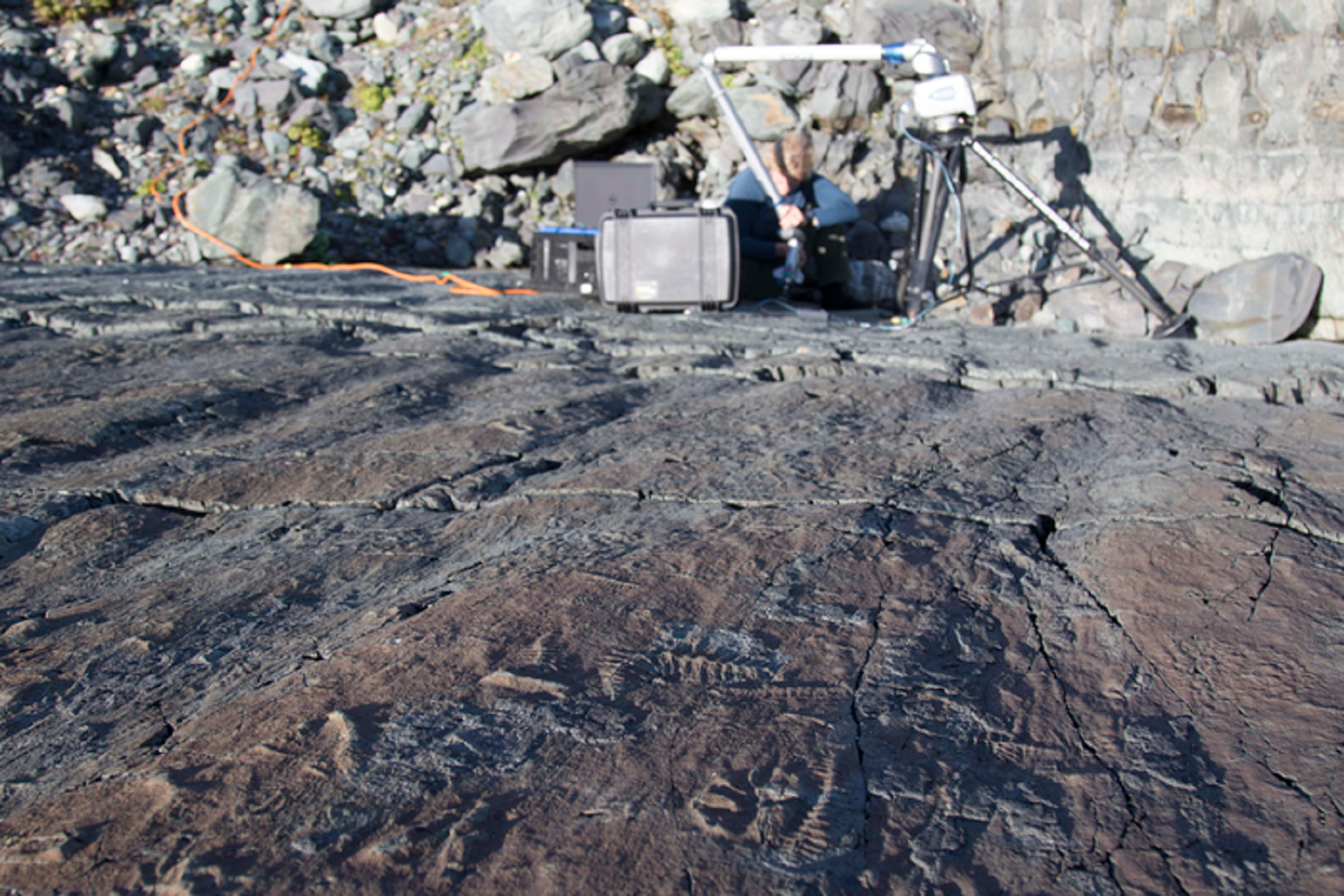These weird marine critters paved the way for the ‘Cambrian explosion’ of species
Fossils from Newfoundland sea beds give a clue to how early animal communities formed.

Around 540 million years ago, Earth’s life underwent a burst of evolution that gave rise to the major groups of animals alive today, including those with backbones and those that hunt prey. This bonanza is known as the Cambrian explosion. Based on the fossil record, animal life appeared to be comparatively sparse and looked very different from the creatures that emerged later in the fossil record.
For decades, paleontologists have been searching for a way to explain the stark contrast in diversity. One leading theory is that an environmental disaster wiped out most animal life prior to the Cambrian explosion. A new analysis, however, indicates that earlier animals had already formed complex ecosystems before the Cambrian Period kicked off. Researchers examined data from fossil beds around the world and determined that animal diversity may have dipped during a period known as the late Ediacaran, around 572 million to 541 million years ago. As Ediacaran organisms became more specialized, some species couldn’t keep up with their neighbors, the team reported on May 17 in the journal PLoS Biology.
“What this is showing very distinctly is that actually the Ediacarans were the precursors to the Cambrian,” says Emily Mitchell, a paleontologist at the University of Cambridge and coauthor of the findings. “It was very much the start of the Cambrian explosion.”
[Related: A close look at amber fossils that have stuck through the ages]
For around 3 billion years, single-celled organisms dominated Earth’s seas. The first animals emerged during the late Ediacaran, and some of the oldest organisms organisms dwelled in deep water and resembled plants with feathery-looking structures branching off a central stem. Others had segmented disk-like bodies.
“One of the really unique things about the oldest of these Ediacaran organisms is they have this strange fractal branching—they had branches of branches of branches,” Mitchell says. “Studying Ediacaran organisms is really hard because their body plans are unlike anything else alive today or elsewhere in the fossil record.”

Fortunately—for paleontologists, anyway—many Ediacaran communities were preserved in ash and debris from volcanic eruptions, mudslides, and other sudden disasters. “It’s basically like Pompeii; everyone’s existing happily and then suddenly you have this massive burial event,” Mitchell says. “You have these amazing snapshots of Ediacaran life.” What’s more, most Ediacaran remains went undisturbed because there weren’t yet scavengers to dig up the carcasses. Instead, Ediacaran animals often ate by filtering scraps of decaying organic matter and plankton from the water.
To understand these organisms is to understand the origin of complex life on Earth—and the likelihood it exists elsewhere in the universe, says Simon Darroch, a geobiologist at Vanderbilt University who wasn’t involved in the research. “We really need to work out what these organisms are, how they formed and interacted in communities, and then what happened over the Ediacaran-Cambrian boundary,” Darroch says. “It’s a crucial interval in Earth’s history.”
In an attempt to investigate how these animals lived and interacted with each other, Mitchell and her collaborators examined records of 86 Ediacaran fossil beds. Those represented 124 species from around the world, like the iconic Charnia and Dickinsonia. The study authors also examined previously published data on Ediacaran environmental conditions inferred from the surrounding rocks. The researchers evaluated how often different species appeared alongside each other, and in what environments.
In the most ancient sites, the team identified few links between any particular species or habitats. But that changed with younger groups of fossils. Certain organisms tended to group at the same locations, while others never overlapped. Communities of Ediacaran organisms also varied more distinctly depending on the depth or geographic region they dwelled in.
“What that’s telling us is these species are adapting to each other and their environment,” Mitchell says.
This pattern—of increasing specialization over time—is the opposite of what’s expected after a cataclysmic event. When a massive volcano erupts or a dinosaur-killing asteroid strikes Earth, the species that survive or emerge afterward tend to be hardy generalists that can endure a broad range of conditions. That doesn’t fit the bill for the Ediacarans, Mitchell and her team observed.
“We see an increase in ecological complexity,” she says. “Even though we have a decrease in the [overall] number of species, that’s because they’re specializing, they’re finding their particular niches, rather than something external is killing them off.”
[Related: Eastern Africa’s oldest human fossils are more ancient than we realized]
More detailed analysis will be needed to determine the pressures driving these patterns, Mitchell says. Two species might have occupied the same area because they had similar nutritional needs. Or they may have benefitted from each other’s presence, similarly to present-day plants and pollinators. Another pair of species might not coexist because they’re suited to different habitats, or because one animal will outcompete the other if they share the same space.
At this stage, Darroch says, there still isn’t enough evidence to rule out a catastrophic extinction at the end of the Ediacaran. However, he adds, the new paper does indicate that Ediacaran ecosystems were “certainly way more dynamic” than they’ve been given credit for.
Researchers have determined that many animal innovations, such as hard exoskeletons and predatory behavior, originated in the Ediacaran’s final chapter. It “makes intuitive sense” that these organisms were beginning to settle into more specialized roles and seek out different habitats, Darroch says.
“The more you look into the Ediacaran the more you can see that it’s a gradual crescendo,” he says. The emergence of modern animal groups happened relatively gradually, and “finally went nuts” at the start of the Cambrian period. “But the roots of the explosion,” he adds, “go way deeper.”
